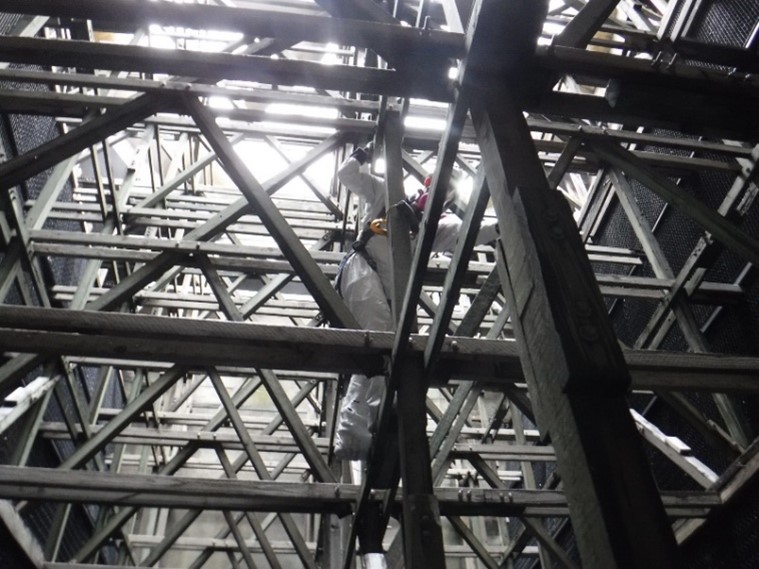Cooling Tower Reliability – Inspection Time: What To Expect
In part 1 of this series, we explored the importance of investing in cooling tower maintenance. In part 2 of this series, we will focus on what to expect while planning and executing a cooling tower inspection.
Planning and Saftey
Cooling tower inspections require strategic planning to ensure that inspection cycles align with scheduled outages and do not result in any loss of production time. Another important factor to consider when preparing for an inspection is safety. Cooling towers pose many safety risks for workers such as confined space entry, working at heights, working over water, and legionella bacteria (legionnaire’s disease) to name a few. When choosing a company to perform an evaluation on a cooling tower, the inspectors should be a neutral party, properly trained and qualified to work safely under these conditions.
Routine is Key
Routine cooling tower assessments are important for continued reliability, safety and maintaining normal day-to-day operations at any industrial facility. These assessments are made through systematic, hands-on inspections of critical structural members, fan stacks, basins, and other key cooling tower components.
Performing routine inspections is an efficient way to locate deficiencies and safety risks within the cooling water system and provides a baseline to track defect progression over time for predictive maintenance. This is done with the use of visual and hands-on inspection methods (ex. probing, moisture reading, hammer sounding, etc.) to locate any areas of deteriorated timber, excessive biological or chemical attacks, and missing or failed structural members. Defects that are located within the tower are evaluated from a risk-based standpoint considering factors such as the impact on the structural integrity of the tower, safety risks, and any other immediate needs/concerns expressed by the owner.

Timing and Documentation
Typically, the time frame for accessing the interior of the tower is limited to the initial inspection window and while repairs are being executed. Because of this, proper documentation during the inspection is equally as important as the inspection itself. Documentation includes the extents of the defects (i.e. size, length, quantity), the relative location of deterioration, and digital photographs showing current conditions for later comparisons. 3D BIM models are used for visual representations of locations of all deficiencies and serves as a useful tool for prioritizing, planning, and maintaining the structure (see below photo.)

Summary
In conclusion, performing routine inspections on cooling towers is a crucial step in increasing the reliability of the structure and extending the design life of the cooling water system. Inspection times should align with scheduled outages to minimize the financial impact of lost production time and to ensure the inspection can be performed safely. Overall, cooling tower inspections provide valuable evaluations on record for the owner to track the progression of any deficiencies over time and provides an efficient tool for planning and prioritizing maintenance on the structure.
– Matthew Wooden, Structural Engineer, Brindley Engineering
Read Part 1: Industrial Cooling Tower Maintenance
Read Part 3: Cooling Tower Structural Analysis
Read Part 4: Cooling Tower Repair Plan
Read Part 5: Cooling Tower Preventative Maintenance


0 Comments